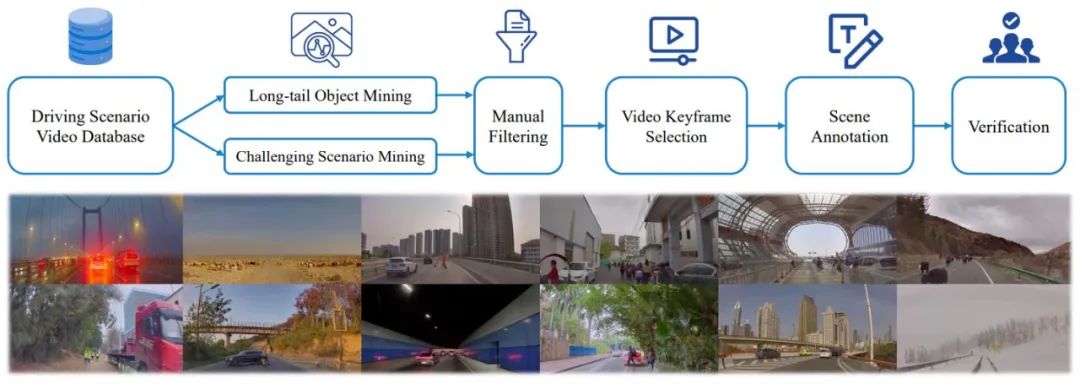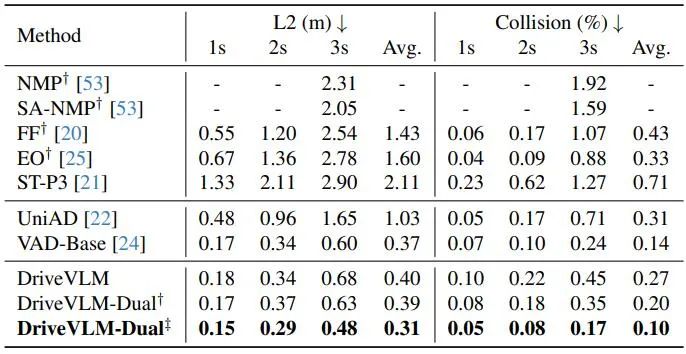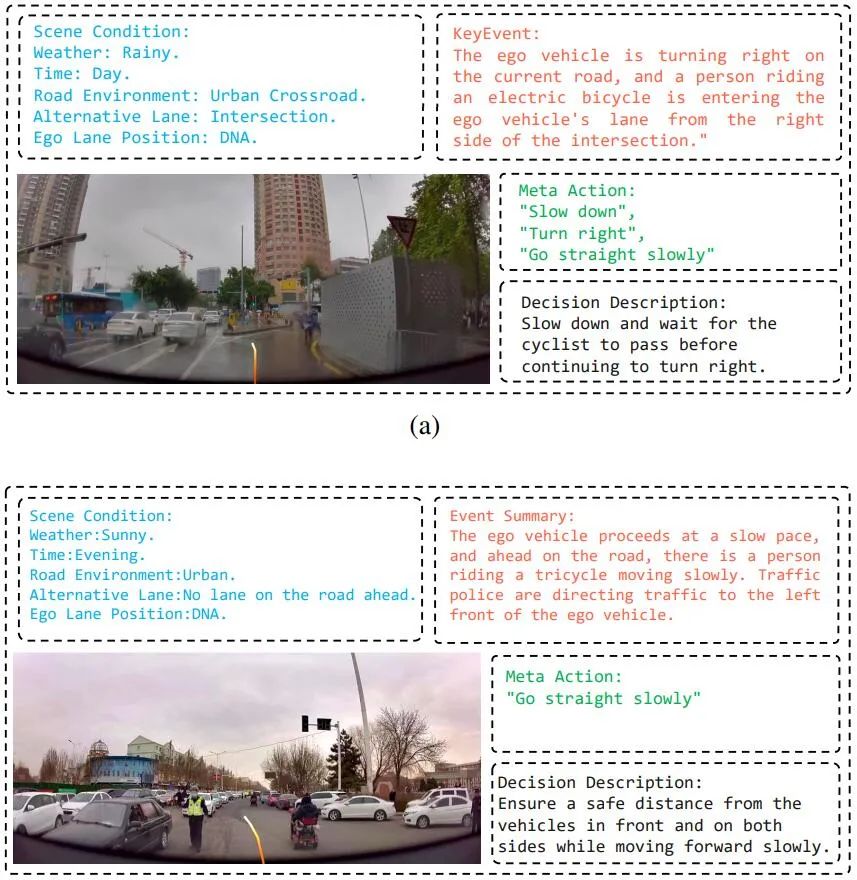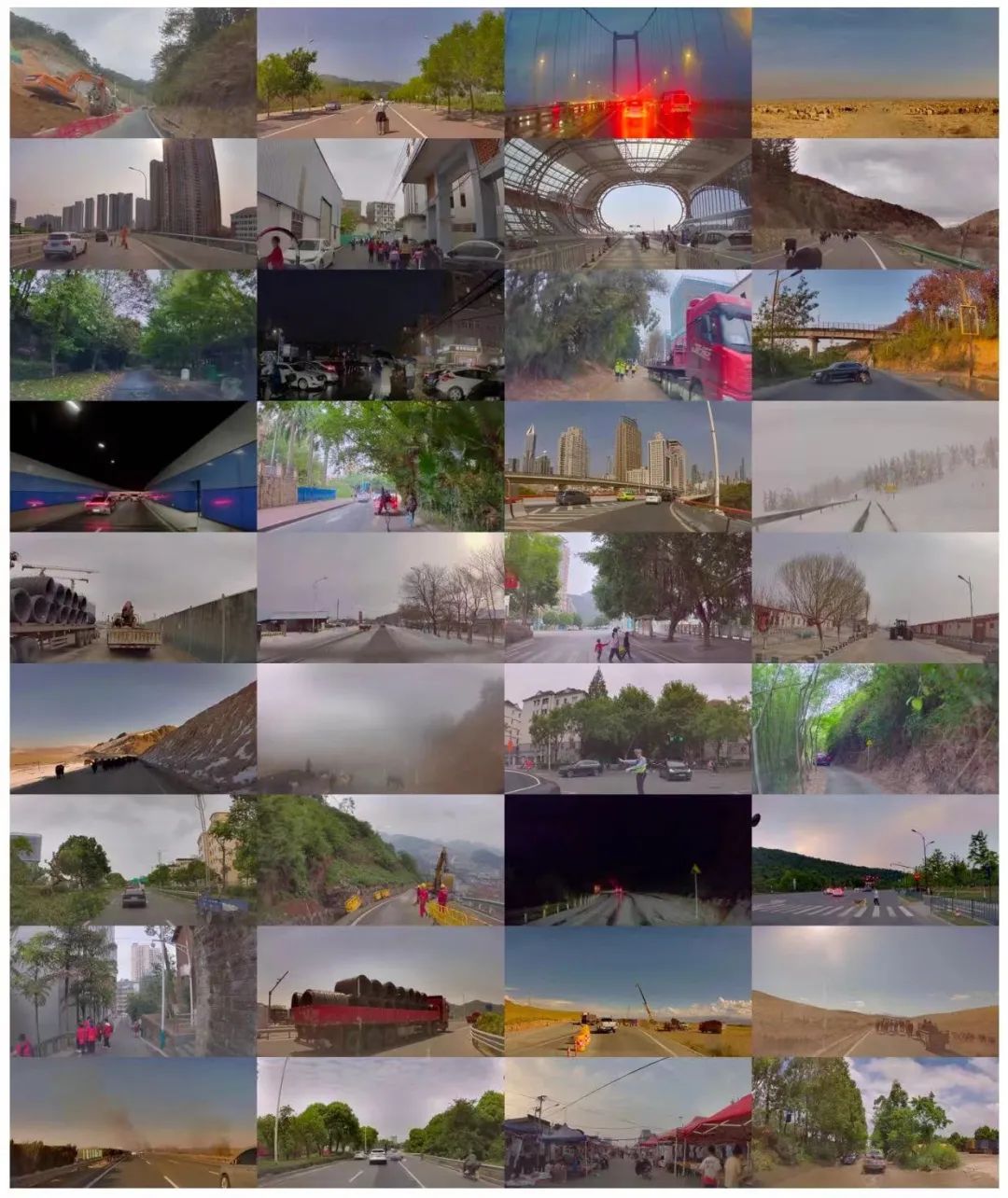 Technology peripherals
Technology peripherals
 AI
AI
 Tsinghua University and Ideal proposed DriveVLM, a visual large language model to improve autonomous driving capabilities
Tsinghua University and Ideal proposed DriveVLM, a visual large language model to improve autonomous driving capabilities
Tsinghua University and Ideal proposed DriveVLM, a visual large language model to improve autonomous driving capabilities
In the field of autonomous driving, researchers are also exploring the direction of large models such as GPT/Sora.
Compared with generative AI, autonomous driving is also one of the most active research and development areas in recent AI. A major challenge in building a fully autonomous driving system is AI's scene understanding, which involves complex, unpredictable scenarios such as severe weather, complex road layouts, and unpredictable human behavior.
The current autonomous driving system usually consists of three parts: 3D perception, motion prediction and planning. Specifically, 3D perception is mainly used to detect and track familiar objects, but its ability to identify rare objects and their attributes is limited; while motion prediction and planning mainly focus on the trajectory actions of objects, but usually ignore the relationship between objects and vehicles. decision-level interactions between These limitations may affect the accuracy and safety of autonomous driving systems when handling complex traffic scenarios. Therefore, future autonomous driving technology needs to be further improved to better identify and predict various types of objects, and to plan the vehicle's driving path more effectively to improve the intelligence and reliability of the system
implementation The key to autonomous driving is to transform a data-driven approach into a knowledge-driven approach, which requires training large models with logical reasoning capabilities. Only in this way can the autonomous driving system truly solve the long tail problem and move towards L4 capabilities. Currently, as large models like GPT4 and Sora continue to emerge, the scale effect has also demonstrated powerful few-shot/zero-shot capabilities, which has led people to consider a new development direction.
The latest research paper comes from the Cross Information Institute of Tsinghua University and Li Auto, in which they introduce a new model called DriveVLM. This model is inspired by the visual language model (VLM) emerging in the field of generative artificial intelligence. DriveVLM has demonstrated excellent capabilities in visual understanding and reasoning.
This work is the first in the industry to propose an autonomous driving speed control system. Its method fully combines the mainstream autonomous driving process with a large-scale model process with logical thinking capabilities, and is the first time to successfully deploy a large-scale model to Terminal for testing (based on Orin platform).
DriveVLM covers a Chain-of-Though (CoT) process, including three main modules: scenario description, scenario analysis and hierarchical planning. In the scene description module, language is used to describe the driving environment and identify key objects in the scene; the scene analysis module deeply studies the characteristics of these key objects and their impact on autonomous vehicles; while the hierarchical planning module gradually formulates plans from the elements Actions and decisions are described to waypoints.
These modules correspond to the perception, prediction, and planning steps of traditional autonomous driving systems, but the difference is that they handle object perception, intent-level prediction, and task-level planning, which have been very challenging in the past.
Although VLMs perform well in visual understanding, they have limitations in spatial basis and reasoning, and their computing power requirements pose challenges to the speed of end-side reasoning. Therefore, the authors further propose DriveVLMDual, a hybrid system that combines the advantages of DriveVLM and traditional systems. DriveVLM-Dual optionally integrates DriveVLM with traditional 3D perception and planning modules such as 3D object detectors, occupancy networks, and motion planners, enabling the system to achieve 3D grounding and high-frequency planning capabilities. This dual-system design is similar to the slow and fast thinking processes of the human brain and can effectively adapt to different complexities in driving scenarios.
The new research also further clarifies the definition of scene understanding and planning (SUP) tasks and proposes some new evaluation metrics to evaluate the capabilities of DriveVLM and DriveVLM-Dual in scene analysis and meta-action planning. In addition, the authors performed extensive data mining and annotation work to build an in-house SUP-AD dataset for the SUP task.
After extensive experiments on the nuScenes dataset and our own dataset, the superiority of DriveVLM was demonstrated, especially with a small number of shots. Furthermore, DriveVLM-Dual surpasses state-of-the-art end-to-end motion planning methods.
Paper "DriveVLM: The Convergence of Autonomous Driving and Large Vision-Language Models"

- Encode continuous frame visual images and interact with LMM through the feature alignment module;
- Start from the scene description to guide the thinking of the VLM model, first guide the time, scene, Static scenes such as lane environments are used to guide key obstacles that affect driving decisions;
- analyzes key obstacles and matches them through traditional 3D detection and VLM-understood obstacles to further improve Confirm the effectiveness of obstacles and eliminate illusions, describe the characteristics of key obstacles in this scenario and their impact on our driving;
Gives key "meta-decisions", such as deceleration, parking, turning left and right, etc., and then gives a description of the driving strategy based on the meta-decisions, and finally gives the future driving trajectory of the host vehicle.

Figure 1. DriveVLM and DriveVLM-Dual model pipeline. A sequence of images is processed by a large visual language model (VLM) to perform special chain-of-thought (CoT) reasoning to derive driving planning results. Large VLM involves a visual transformer encoder and a large language model (LLM). A visual encoder produces image tags; an attention-based extractor then aligns these tags with an LLM; and finally, the LLM performs CoT inference. The CoT process can be divided into three modules: scenario description, scenario analysis, and hierarchical planning.
DriveVLM-Dual is a hybrid system that improves the decision-making and planning capabilities of traditional autonomous driving pipelines by leveraging DriveVLM’s comprehensive understanding of the environment and recommendations for decision trajectories. It incorporates 3D perception results into verbal cues to enhance 3D scene understanding and further refines trajectory waypoints with a real-time motion planner.
Although VLMs are good at identifying long-tail objects and understanding complex scenes, they often struggle to accurately understand the spatial location and detailed motion status of objects, a shortcoming that poses a significant challenge. To make matters worse, the huge model size of VLM results in high latency, hindering the real-time response capability of autonomous driving. To address these challenges, the author proposes DriveVLM-Dual, which allows DriveVLM and traditional autonomous driving systems to cooperate. This new approach involves two key strategies: key object analysis combined with 3D perception to give high-dimensional driving decision information, and high-frequency trajectory refinement.
In addition, to fully realize the potential of DriveVLM and DriveVLMDual in handling complex and long-tail driving scenarios, the researchers formally defined a task called scene understanding planning, as well as a set of evaluation metrics. Furthermore, the authors propose a data mining and annotation protocol to manage scene understanding and planning datasets.
In order to fully train the model, the author has newly developed a set of Drive LLM annotation tools and annotation solutions, which are combined with multiple methods such as automated mining, perceptual algorithm pre-brushing, GPT-4 large model summary and manual annotation. , forming the current set of efficient annotation solutions. Each Clip data contains dozens of annotation contents.

## 图 2 2. Annotation sample of the SUP-AD dataset.

Figure 3. Data mining and annotation pipeline for building scenario understanding and planning datasets (above). Examples of scenarios randomly sampled from the dataset (below) demonstrate the diversity and complexity of the dataset.
SUP-AD is divided into training, validation and testing parts with a ratio of 7.5:1:1.5. The authors train the model on the training split and use newly proposed scene description and meta-action metrics to evaluate the model performance on the validation/test split.
nuScenes dataset is a large-scale urban scene driving dataset with 1000 scenes, each lasting about 20 seconds. Keyframes are annotated uniformly at 2Hz across the entire dataset. Here, the authors adopt displacement error (DE) and collision rate (CR) as indicators to evaluate the model's performance on verification segmentation.
###The authors demonstrate the performance of DriveVLM with several large-scale visual language models and compare them with GPT-4V, as shown in Table 1. DriveVLM utilizes Qwen-VL as its backbone, which achieves the best performance compared to other open source VLMs and is characterized by responsiveness and flexible interaction. The first two large models have been open sourced and used the same data for fine-tuning training. GPT-4V uses complex prompts for prompt engineering. ###
Table 1. Test set results on the SUP-AD data set. The official API of GPT-4V is used here, and for Lynx and CogVLM, training splits are used for fine-tuning.
As shown in Table 2, DriveVLM-Dual achieves state-of-the-art performance on nuScenes planning tasks when paired with VAD. This shows that the new method, although tailored for understanding complex scenes, also performs well in ordinary scenes. Note that DriveVLM-Dual improves significantly over UniAD: the average planning displacement error is reduced by 0.64 meters and the collision rate is reduced by 51%.

Table 2. Planning results for nuScenes validation dataset. DriveVLM-Dual achieves optimal performance. †Represents perception and occupancy prediction results using Uni-AD. ‡ Indicates working with VAD, where all models take ego states as input. Figure 4. Qualitative results of DriveVLM. The orange curve represents the model's planned future trajectory over the next 3 seconds. 
## 图 7: Various driving scenarios in SUP-AD data concentration.

# 图 9. Sup-AD data concentration cow cluster and herds. A herd of cattle is moving slowly in front of the car, requiring the policy to reason that the car is moving slowly and keeping a safe distance from the cattle. Figure 16. Visualization of DriveVLM output. DriveVLM can accurately detect fallen trees and their locations, then plan an appropriate detour.

The above is the detailed content of Tsinghua University and Ideal proposed DriveVLM, a visual large language model to improve autonomous driving capabilities. For more information, please follow other related articles on the PHP Chinese website!

Hot AI Tools

Undresser.AI Undress
AI-powered app for creating realistic nude photos

AI Clothes Remover
Online AI tool for removing clothes from photos.

Undress AI Tool
Undress images for free

Clothoff.io
AI clothes remover

Video Face Swap
Swap faces in any video effortlessly with our completely free AI face swap tool!

Hot Article

Hot Tools

Notepad++7.3.1
Easy-to-use and free code editor

SublimeText3 Chinese version
Chinese version, very easy to use

Zend Studio 13.0.1
Powerful PHP integrated development environment

Dreamweaver CS6
Visual web development tools

SublimeText3 Mac version
God-level code editing software (SublimeText3)

Hot Topics
 1386
1386
 52
52
 DeepMind robot plays table tennis, and its forehand and backhand slip into the air, completely defeating human beginners
Aug 09, 2024 pm 04:01 PM
DeepMind robot plays table tennis, and its forehand and backhand slip into the air, completely defeating human beginners
Aug 09, 2024 pm 04:01 PM
But maybe he can’t defeat the old man in the park? The Paris Olympic Games are in full swing, and table tennis has attracted much attention. At the same time, robots have also made new breakthroughs in playing table tennis. Just now, DeepMind proposed the first learning robot agent that can reach the level of human amateur players in competitive table tennis. Paper address: https://arxiv.org/pdf/2408.03906 How good is the DeepMind robot at playing table tennis? Probably on par with human amateur players: both forehand and backhand: the opponent uses a variety of playing styles, and the robot can also withstand: receiving serves with different spins: However, the intensity of the game does not seem to be as intense as the old man in the park. For robots, table tennis
 The first mechanical claw! Yuanluobao appeared at the 2024 World Robot Conference and released the first chess robot that can enter the home
Aug 21, 2024 pm 07:33 PM
The first mechanical claw! Yuanluobao appeared at the 2024 World Robot Conference and released the first chess robot that can enter the home
Aug 21, 2024 pm 07:33 PM
On August 21, the 2024 World Robot Conference was grandly held in Beijing. SenseTime's home robot brand "Yuanluobot SenseRobot" has unveiled its entire family of products, and recently released the Yuanluobot AI chess-playing robot - Chess Professional Edition (hereinafter referred to as "Yuanluobot SenseRobot"), becoming the world's first A chess robot for the home. As the third chess-playing robot product of Yuanluobo, the new Guoxiang robot has undergone a large number of special technical upgrades and innovations in AI and engineering machinery. For the first time, it has realized the ability to pick up three-dimensional chess pieces through mechanical claws on a home robot, and perform human-machine Functions such as chess playing, everyone playing chess, notation review, etc.
 Claude has become lazy too! Netizen: Learn to give yourself a holiday
Sep 02, 2024 pm 01:56 PM
Claude has become lazy too! Netizen: Learn to give yourself a holiday
Sep 02, 2024 pm 01:56 PM
The start of school is about to begin, and it’s not just the students who are about to start the new semester who should take care of themselves, but also the large AI models. Some time ago, Reddit was filled with netizens complaining that Claude was getting lazy. "Its level has dropped a lot, it often pauses, and even the output becomes very short. In the first week of release, it could translate a full 4-page document at once, but now it can't even output half a page!" https:// www.reddit.com/r/ClaudeAI/comments/1by8rw8/something_just_feels_wrong_with_claude_in_the/ in a post titled "Totally disappointed with Claude", full of
 At the World Robot Conference, this domestic robot carrying 'the hope of future elderly care' was surrounded
Aug 22, 2024 pm 10:35 PM
At the World Robot Conference, this domestic robot carrying 'the hope of future elderly care' was surrounded
Aug 22, 2024 pm 10:35 PM
At the World Robot Conference being held in Beijing, the display of humanoid robots has become the absolute focus of the scene. At the Stardust Intelligent booth, the AI robot assistant S1 performed three major performances of dulcimer, martial arts, and calligraphy in one exhibition area, capable of both literary and martial arts. , attracted a large number of professional audiences and media. The elegant playing on the elastic strings allows the S1 to demonstrate fine operation and absolute control with speed, strength and precision. CCTV News conducted a special report on the imitation learning and intelligent control behind "Calligraphy". Company founder Lai Jie explained that behind the silky movements, the hardware side pursues the best force control and the most human-like body indicators (speed, load) etc.), but on the AI side, the real movement data of people is collected, allowing the robot to become stronger when it encounters a strong situation and learn to evolve quickly. And agile
 ACL 2024 Awards Announced: One of the Best Papers on Oracle Deciphering by HuaTech, GloVe Time Test Award
Aug 15, 2024 pm 04:37 PM
ACL 2024 Awards Announced: One of the Best Papers on Oracle Deciphering by HuaTech, GloVe Time Test Award
Aug 15, 2024 pm 04:37 PM
At this ACL conference, contributors have gained a lot. The six-day ACL2024 is being held in Bangkok, Thailand. ACL is the top international conference in the field of computational linguistics and natural language processing. It is organized by the International Association for Computational Linguistics and is held annually. ACL has always ranked first in academic influence in the field of NLP, and it is also a CCF-A recommended conference. This year's ACL conference is the 62nd and has received more than 400 cutting-edge works in the field of NLP. Yesterday afternoon, the conference announced the best paper and other awards. This time, there are 7 Best Paper Awards (two unpublished), 1 Best Theme Paper Award, and 35 Outstanding Paper Awards. The conference also awarded 3 Resource Paper Awards (ResourceAward) and Social Impact Award (
 Hongmeng Smart Travel S9 and full-scenario new product launch conference, a number of blockbuster new products were released together
Aug 08, 2024 am 07:02 AM
Hongmeng Smart Travel S9 and full-scenario new product launch conference, a number of blockbuster new products were released together
Aug 08, 2024 am 07:02 AM
This afternoon, Hongmeng Zhixing officially welcomed new brands and new cars. On August 6, Huawei held the Hongmeng Smart Xingxing S9 and Huawei full-scenario new product launch conference, bringing the panoramic smart flagship sedan Xiangjie S9, the new M7Pro and Huawei novaFlip, MatePad Pro 12.2 inches, the new MatePad Air, Huawei Bisheng With many new all-scenario smart products including the laser printer X1 series, FreeBuds6i, WATCHFIT3 and smart screen S5Pro, from smart travel, smart office to smart wear, Huawei continues to build a full-scenario smart ecosystem to bring consumers a smart experience of the Internet of Everything. Hongmeng Zhixing: In-depth empowerment to promote the upgrading of the smart car industry Huawei joins hands with Chinese automotive industry partners to provide
 Li Feifei's team proposed ReKep to give robots spatial intelligence and integrate GPT-4o
Sep 03, 2024 pm 05:18 PM
Li Feifei's team proposed ReKep to give robots spatial intelligence and integrate GPT-4o
Sep 03, 2024 pm 05:18 PM
Deep integration of vision and robot learning. When two robot hands work together smoothly to fold clothes, pour tea, and pack shoes, coupled with the 1X humanoid robot NEO that has been making headlines recently, you may have a feeling: we seem to be entering the age of robots. In fact, these silky movements are the product of advanced robotic technology + exquisite frame design + multi-modal large models. We know that useful robots often require complex and exquisite interactions with the environment, and the environment can be represented as constraints in the spatial and temporal domains. For example, if you want a robot to pour tea, the robot first needs to grasp the handle of the teapot and keep it upright without spilling the tea, then move it smoothly until the mouth of the pot is aligned with the mouth of the cup, and then tilt the teapot at a certain angle. . this
 Distributed Artificial Intelligence Conference DAI 2024 Call for Papers: Agent Day, Richard Sutton, the father of reinforcement learning, will attend! Yan Shuicheng, Sergey Levine and DeepMind scientists will give keynote speeches
Aug 22, 2024 pm 08:02 PM
Distributed Artificial Intelligence Conference DAI 2024 Call for Papers: Agent Day, Richard Sutton, the father of reinforcement learning, will attend! Yan Shuicheng, Sergey Levine and DeepMind scientists will give keynote speeches
Aug 22, 2024 pm 08:02 PM
Conference Introduction With the rapid development of science and technology, artificial intelligence has become an important force in promoting social progress. In this era, we are fortunate to witness and participate in the innovation and application of Distributed Artificial Intelligence (DAI). Distributed artificial intelligence is an important branch of the field of artificial intelligence, which has attracted more and more attention in recent years. Agents based on large language models (LLM) have suddenly emerged. By combining the powerful language understanding and generation capabilities of large models, they have shown great potential in natural language interaction, knowledge reasoning, task planning, etc. AIAgent is taking over the big language model and has become a hot topic in the current AI circle. Au



